fluid dynamics
The aim of this proposal is to conduct a systematic investigation of the control of bubbles generated by boiling by means of acoustic waves. An experimental setup previously tested at the Laboratory of Microgravity (UPC-BarcelonaTech) and in two sounding rocket flights (one in the NASA Flight Opportunities Programme and one REXUS ESA Education) will be modified to adapt to the ZARM drop tower requirements.mehr...
Gegenstand der vorliegenden Untersuchung ist die Erforschung stationärer und instationärer Strömungen in offenen kapillaren Kanälen. Eine besondere Bedeutung kommt diesen Strömungen unter kompensierter Gravitation zu, weil die charakteristische Länge L = √σ/(ρg) die Größenordnung von Dezimetern erreicht, während sie bei terrestrischer Gravitation lediglich einige Millimeter beträgt.mehr...
Capillary driven surface oscillations of liquid argon (Tsat = 87.3 K at 1,013 hPa) have been investigated in a partly filled right circular cylinder under non-isothermal boundary conditions. The oscillations take place during the reorientation from the normal gravity surface position towards a new position upon step reduction of gravity.mehr...
For liquid propellant management in space it is sometimes important to vent gas from the fuel tank. To this end, gas phase and liquid phase must be separated to avoid the unnecessary loss of fuel. Capillary devices have been developed to master the challenge that are based on the bubble point effect.mehr...
One of the main tasks in the field of astronautics is the gas- and vapour-free propellant supply of the engines. One mission scenario is to reignite the cryogenic upper stage of the rocket during the ballistic flight phase. For re-ignition during the ballistic flight phase so-called Propellant Management Devices (PMDs) are required.mehr...
In this project different possible scenarios were analyzed which can occur to a reignitable tank system of spacecraft during non-driven flight phases. The main focus is on a refillable reservoir which is assembled on the axis of rotation near the tank outlet, the so-called PMD (here for the LOX tank).mehr...
In future cryogenic upper stages the ability of multiple starts of the engine is required [1, 2]. Centrifugal forces caused by the spinning of the stage could drive the liquid propellant away from the outlet of a Propellant Management Device (PMD) resulting in malfunction of the system [3].mehr...
Propellant management devices are used to supply thrusters with gas free propellant. Therefore, these devices have to be able to store a minimal amount of propellant during the ballistic phase. This amount has to be sufficient for the chill down phase and the pre-acceleration for settling the liquid in the tank.mehr...
Dieses Projekt befasst sich mit den Grenzen des stationären Flüssigkeitstransports in offenen Kapillarkanälen. Als offene Kapillarkanäle werden Strukturen bezeichnet, in denen Kapillarkräfte Flüssigkeitsströmungen mit freier Oberfläche ermöglichen und dabei die Strömungseigenschaften wesentlich beeinflussen. Sie werden in der Raumfahrttechnologie eingesetzt, um Flüssigkeiten zu positionieren und über große Distanzen zu transportieren.mehr...
Gesamtziel des Vorhabens war die Untersuchung des Treibstoffverhaltens in Tanks von Raumtransportsystemen. Die Kenntnis des Treibstoffverhaltens in den unterschiedlichen Flugphasen eines Raumtransportsystems ist die Voraussetzung für die optimale Auslegung der Tanksysteme. Die Problematik der Treibstoffhandhabung leitet sich aus den unterschiedlichen Flugphasen, den zugehörigen Anfangs- und Randbedingungen sowie der Beschleunigung des Systems selbst ab.mehr...
The purpose of this research is to investigate the growth of a bubble cloud produced upon the collapse of a cavitation bubble in carbonated liquids. Our previous investigations report that the diameter of the cloud, L, initially grows as L prop. t^1/2 consistently with the behavior expected for an isolated bubble immersed in a supersaturated solution.mehr...
The purpose of this research is to investigate the growth of a bubble cloud produced upon the collapse of a cavitation bubble in carbonated liquids with high concentration of surfactants. Previous investigations report that the diameter of the cloud, L, initially grows as L ∼ t1/2, consistently with the behavior expected for an isolated bubble immersed in a supersaturated solution.mehr...
Im Gegensatz zu klassischen Kugelspaltexperimenten hat die Untersuchung der Strömungen in Ferrofluiden einen entscheidenden Vorteil. Während normalerweise Achsen benötigt werden, um die innere Kugel zu positionieren und zu bewegen, kann im Falle von Ferrofluiden die magnetische Levitation eines nichtmagnetischen Körpers in einem Ferrofluid in Gegenwart eines homogenen Magnetfeldes verwendet werden, um die Kugel in der Flüssigkeit zu zentrieren.mehr...
Marangoni convection in an open, side-heated container of a rectangular cross-section is investigated experimentally. The cavity’s length is much larger than the distance between the heated walls. Therefore, the flow is quasi-two-dimensional if the thermocapillary Reynolds number and the Rayleigh number are small.mehr...
Electrically heated cylindrical wires are used in research and industry for fluid velocity and turbulence measurements. At very low free-stream velocities (u ≤ 0.1 m/s), hot-wire measure- ments are significantly influenced by buoyant convection. Below a certain Reynolds number Re* this effect degrades the accuracy of the measurements.mehr...
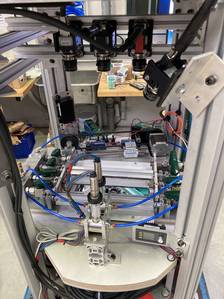
Development and reliance on electronics in space technology trigger a critical problem of heat dissipation. A novel concept of a passive device called Pulsating Heat Pipe (PHP) was proposed in order to meet the heat dissipation requirements. Studies of PHPs in microgravity environment have already been conducted and showed potential applicability in space applications, however, a clear procedure to predict PHP 0g performance based on the geometry of capillary channel/tube does not yet exist.mehr...
Im Rahmen eines Jugend-forscht-Wettbewerbes entstand am ZARM das Forschungsprojekt "Oberflächen magnetischer Flüssigkeiten" (OMF), das durch Dr. Odenbach betreut, vom Betriebspersonal der Fallturmbetriebsgesellschaft unterstützt und nahezu selbstständig von einer Schülergruppe eines Bremer Gymnasiums bearbeitet wurde.mehr...
Im Rahmen des DLR-Projektes „Experimentelle und theoretische Untersuchungen zur Bildung und Deformation von Einzeltropfen als Modell für Schäume und Emulsionen“ werden Flüge am Fallturm in Bremen durchgeführt.
In modernen Technologien spielen sich viele Prozesse bei hoch dynamischen Bedingungen ab. Dies ist unter anderem der Fall bei der Bildung von Schäumen oder Emulsionen. Derartige flüssige Systeme finden in den verschiedensten Gebieten Anwendung, beispielsweise in der Lebensmittelproduktion, der Kosmetik oder der Pharmazie.mehr...
Im Rahmen des Vorhabens werden Untersuchungen zur Flüssigkeits-Gastrennung und zur Diffusion unter Anwendung poröser Medien unter kompensierter Gravitation vorgeschlagen. Die Untersuchungen dienen zum einen der Verbesserung des Verständnisses der Separation von Phasen ohne Nutzung der Schwerkraft.mehr...
The purpose of the proposed research project is to take a step forward in the study of flow boiling in microgravity by combining our previous expertise in management of (non- thermal) two-phase flows, with the needs of a more basic understanding of the physical processes involved in flow boiling heat transfer in microgravity. The rationale is to focus on situations that are sufficiently simple and controllable so that one can get high quality data, which can be amenable to theoretical analysis and interpretation. The long-term goal is to search for fundamental insights that may eventually lead to innovative approaches and potential breakthrough in space technology.mehr...
Der Gegenstand dieses Teilvorhabens ist die Untersuchung der Reorientierung freier Flüssigkeitsoberflächen beim Übergang von Erdgravitation zur Mikrogravitation und den dabei auftretenden Oberflächenschwingungen. Dabei stehen die raumfahrtrelevanten Anwendungsfälle im Vordergrund.mehr...
The proposed research is concerned with the thermal-flow phenomena occurring in superfluid helium-4 in the vicinity of the λ transition. In spite of what is generally considered to be an accurate description of this remarkable liquid, which is the two-fluid approach developed by Landau and Khalatnikov, an alternative modelling technique has been proposed.mehr...
The most powerful rocket upper stages use liquid oxygen (LOX) as oxidizer and liquid hydrogen (LH2) as propellant. By shutting down the engine, the spacecraft enters microgravity and the fluid free surface is now dominated by capillary forces. Since liquid hydrogen is a perfectly wetting fluid with the contact angle 0° an axial sloshing motion is initialized.mehr...
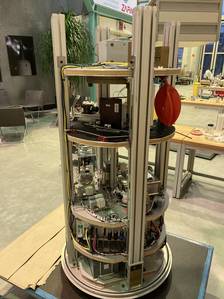
The research project Zero Boil-Off Tank Experiment – Filling and Transfer (ZBOT-FT) aims to demonstrate a proof of concept for filling and transfer of liquid propellants in microgravity, so that such an experiment can be carried out on board the International Space Station (ISS).mehr...


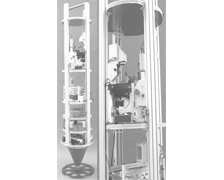
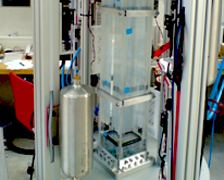
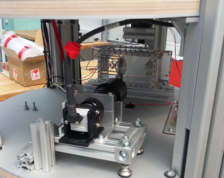
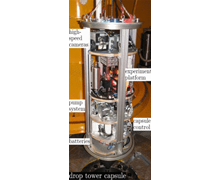
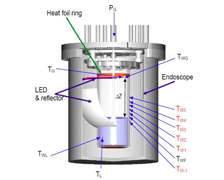
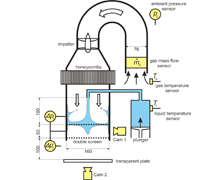
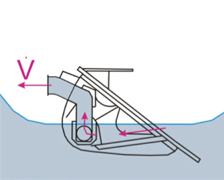
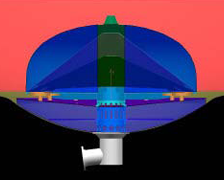
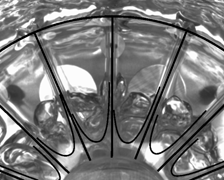
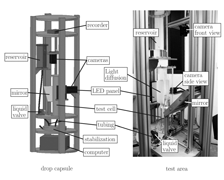
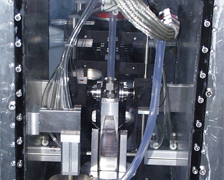
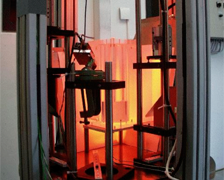
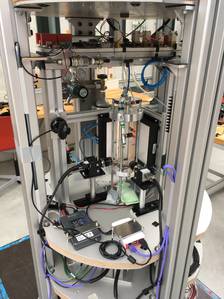
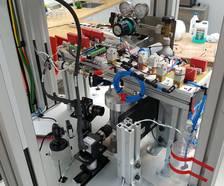
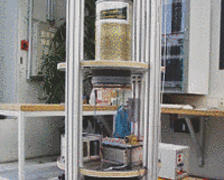
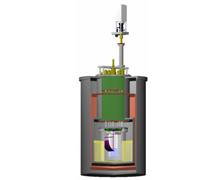
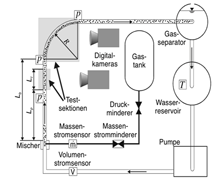
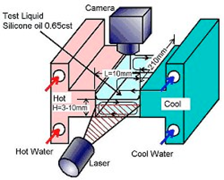
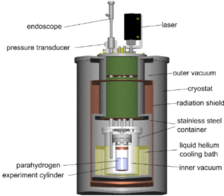
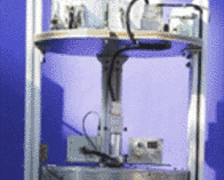
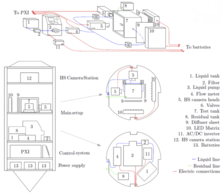
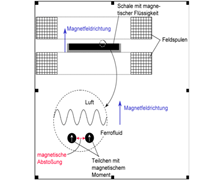
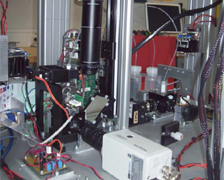
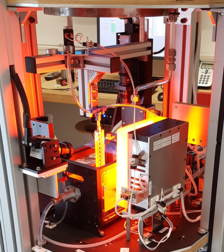
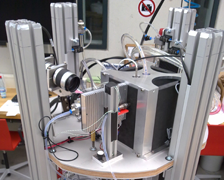
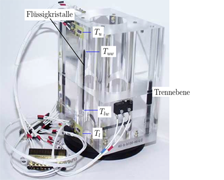
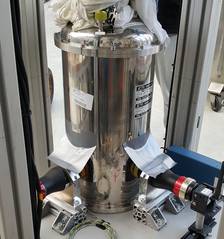
 "
"